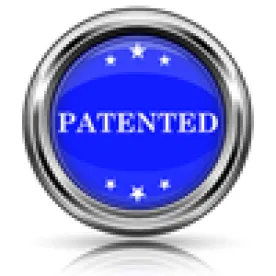Takeaway: If the application that led to the challenged patent included a misstatement concerning the relationship between the application and an earlier application to which it attempted to claim priority, the Board may find that the claims in the challenged patent are not entitled to the earlier filing date, which may result in a finding that the claims are unpatentable over intervening prior art.
In its Decision, the Board instituted an inter partes review of claims 1-31 of U.S. Patent No. 7,643,168 and granted Petitioner’s Motion for Joinder.
The Board began by considering Patent Owner’s request that the Board exercise its discretion under 35 U.S.C. 325(d) to deny the petition on the grounds that “there are a total of eight IPR petitions filed asserting unpatentability of the claims of the ’168 patent” and because “the prior art relied on in this Petition was cited in parallel district court litigation.” The Board declined to exercise its discretion, noting that “[e]ach of the proceedings includes a different petitioner and includes additional grounds to those asserted here” and that it needs “to be cognizant of the interests of other petitioners as well as those of Patent Owner.”
The Board then considered (1) whether the ’168 patent is entitled to the January 12, 1998, filing date of an earlier application, and (2) whether the challenged claims are anticipated under 35 U.S.C. §102(b) by Monroe, a PCT application that was published on July 15, 1999.
In Apple Inc. v. e-Watch, Inc., IPR2015-00414, the Board determined, on the record presented, that “the claims of the ’168 patent are not entitled to the effective filing date” of the January 1998 application because the ’168 patent misstates the relationship between the application that led to the ’168 patent and the ’073 application by stating that the later application is a division of the ’073 application when it was a continuation of a division of the ’073 application. The Board explained that “[t]his misstatement violates 37 C.F.R. § 1.78(a)(2)(i) (pre-AIA), which requires a reference indicating the relationship between the prior-filed application and the application seeking to claim the benefit of the prior-filed application.” The Board concluded that, “[w]ithout the benefit of the filing date of the earlier-filed ’073 application, Monroe is prior art to the claims of the ’168 patent.” Accordingly, the Board instituted IPR of claims 1-21 of the ’168 patent as anticipated by Monroe in that proceeding.
Here, the Petitioner “makes the same argument using the same record as the Apple IPR.” The Patent Owner’s Preliminary Response did not respond to the argument and did not “show that the ’168 patent is entitled to the earlier filing date.” Thus, the Board was persuaded that Petitioner has sufficiently shown a reasonable likelihood that claims 1–31 of the ’168 patent are anticipated under 35 U.S.C. §102(b) by Monroe.
The Board next addressed Petitioner’s additional argument (which was not present in the Apple IPR) that the ’073 application was intentionally abandoned, improperly revived based on a statement that abandonment was unintentional when it was not, and that the applications claiming priority to the ’073 were not co-pending because the application was abandoned before they were filed. Petitioner indicated, however, “that it is willing to ‘drop [this] argument’ if this case is joined to the Apple IPR.” Patent Owner argued that “Petitioner’s position on intentional abandonment extends beyond the jurisdiction for these proceedings set forth in 35 U.S.C. §311.” The Board determined that it “need not address this separate argument” because it is proceeding on the same argument presented in the Apple IPR and because Petitioner has agreed not to pursue the argument.
Finally, the Board granted Petitioner’s Motion for Joinder. As noted by the Board, “[t]he Petition in this proceeding sets forth the same ground and combination of prior art, the same expert declaration, and the same arguments considered by the board in instituting trial in the Apple IPR.” Thus, after reviewing the Petition, the Board concluded that it does not introduce new issues into the Apple IPR. Based on this finding as well as Petitioner’s representation that it was willing to be limited to short separate filings “directed only to points of disagreement with Apple,” that no additional depositions or deposition time will be needed, and that Petitioner’s counsel would coordinate with counsel for Apple, the Board concluded that Petitioner had demonstrated that “joinder will not unduly complicate or delay the Apple IPR” and therefore granted Petitioner’s Motion for Joinder.
Samsung Electronics Co., Ltd. and Samsung Electronics America, Inc. v. e-Watch, Inc., IPR2015-00611
Paper 9: Decision – Institution of Inter Partes Review and Grant of Motion for Joinder
Dated: July 10, 2015
Patent: 7,643,168 B2
Before: Jameson Lee, Gregg I. Anderson, and Matthew R. Clements
Written by: Anderson Related Proceedings: Apple Inc. v. e-Watch, Inc., IPR2015-00414



 />i
/>i

